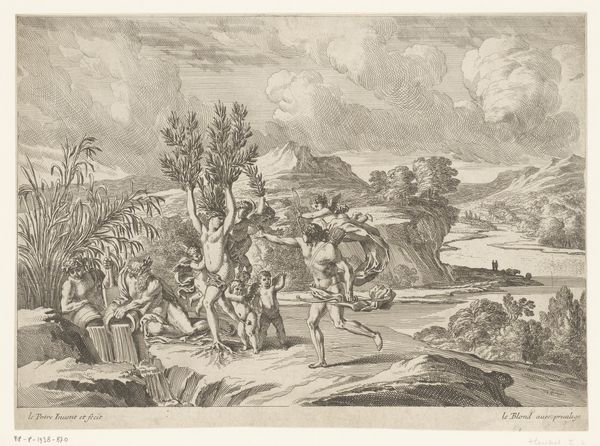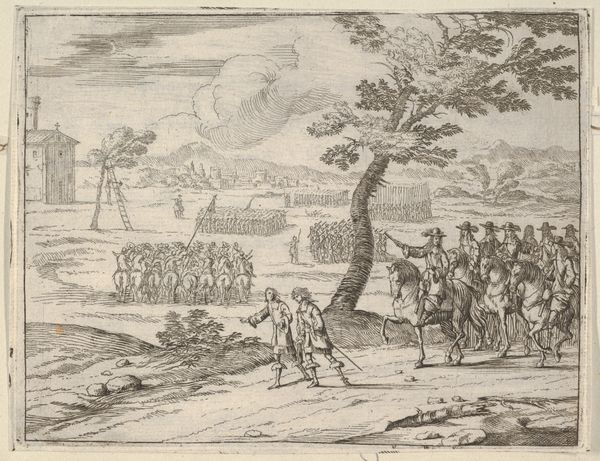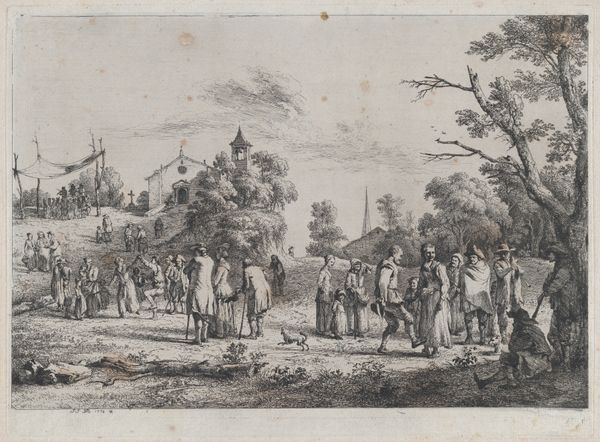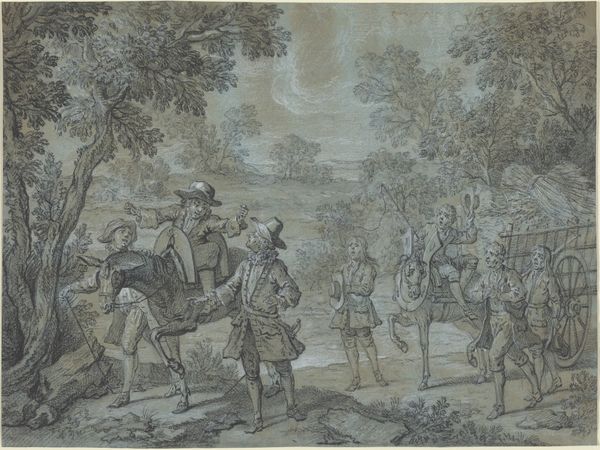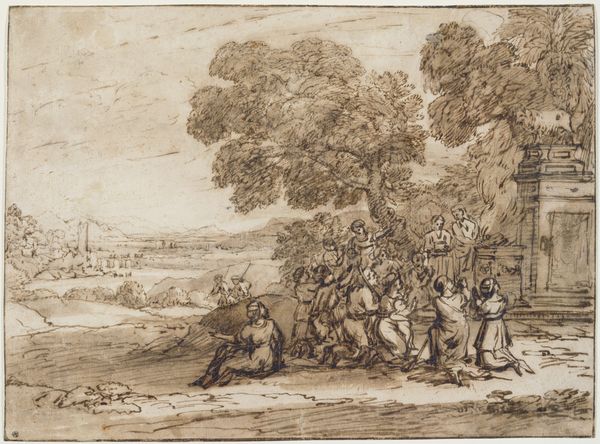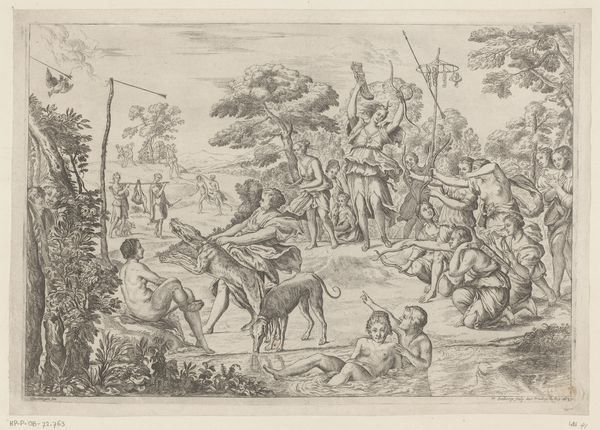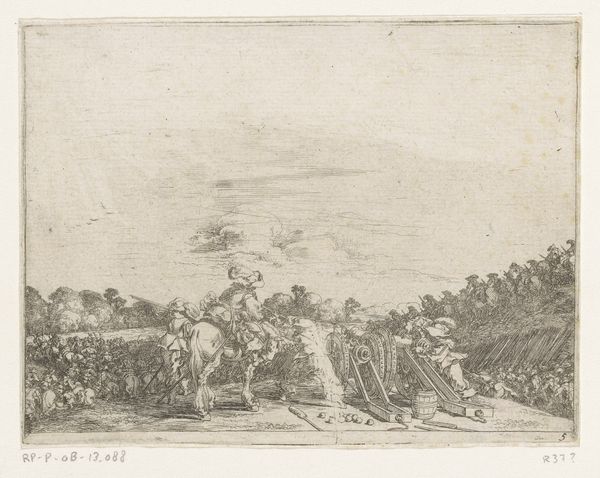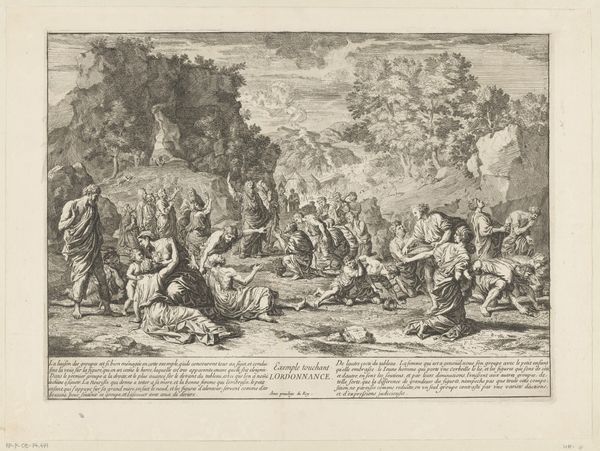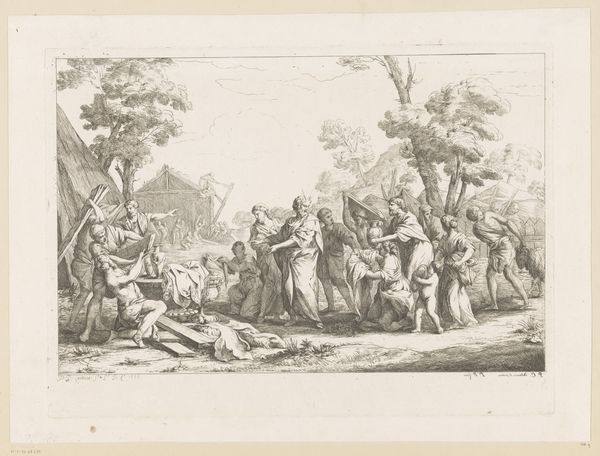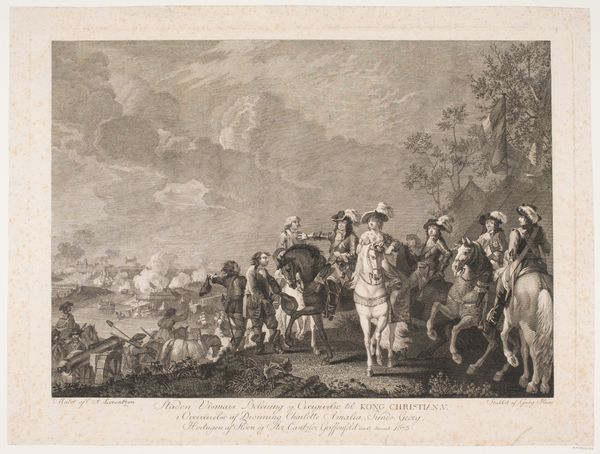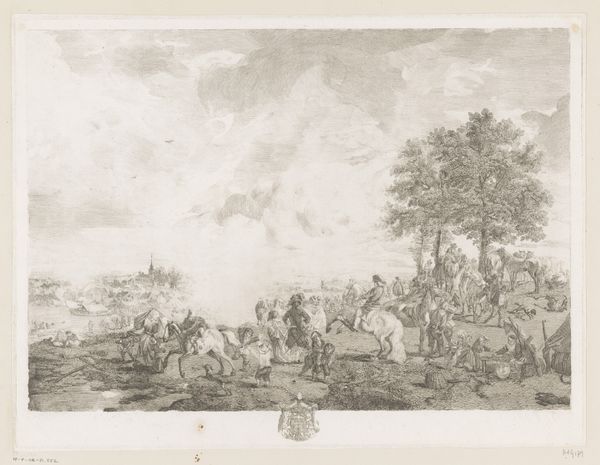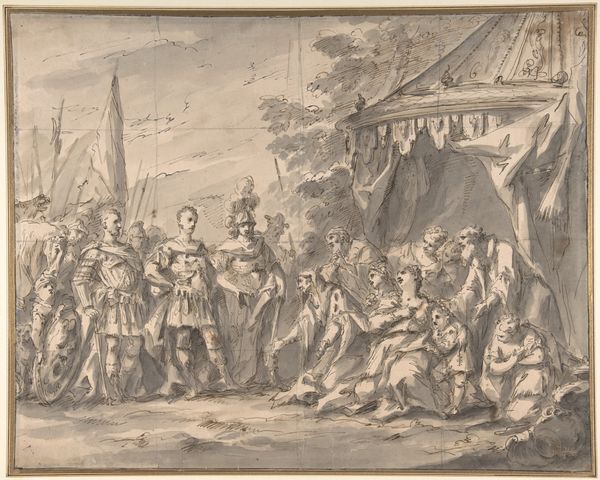
drawing, paper, ink
#
drawing
#
baroque
#
ink painting
#
pencil sketch
#
landscape
#
figuration
#
paper
#
ink
#
genre-painting
#
history-painting
#
watercolor
Copyright: Public Domain
Editor: This ink and paper drawing is by Richard van Orley. The title is "Josef wird von seinen Brüdern in die Grube geworfen," which translates to "Joseph Being Thrown into the Pit by his Brothers." It has a very classical feel, recalling history paintings, with many figures in motion, and yet... the monochromatic palette gives it a detached, almost academic feel. What aspects of the period or the socio-political context shaped how Van Orley approached the Bible story? Curator: A crucial question. Considering Van Orley's work within its historical context is paramount. Remember, Baroque art served often didactic functions, and this piece, with its roots in religious narrative, likely functioned within a very specific social framework. Consider the patronage system: who commissioned works like this, and what messages were they intended to convey to the public? Editor: So, beyond the immediate biblical story, what might the patrons—likely religious figures or wealthy merchants—have wanted viewers to understand? Curator: Precisely. Ask yourself, why choose this particular moment in Joseph's story? Betrayal, envy, forgiveness… these themes resonated with the patrons' values and aims. The emphasis might be less on the literal depiction and more on instilling certain moral values in the audience. This type of artwork subtly reinforces the social and religious order. How does the artist's compositional choice reinforce such ideas, say, the contrast between open landscape and constricted well where Joseph is being cast off? Editor: That’s a really insightful point. I hadn’t considered how the landscape, almost idyllic, emphasizes the moral failing of Joseph's brothers, placing it within a specific setting that amplifies the social implications. This gives the drawing so much depth. Thank you. Curator: And thinking about the relationship between patron, artist, and intended audience adds a whole new level of understanding! It shifts our perception of Baroque art from just aesthetics to a powerful tool shaping cultural norms.
Comments
No comments
Be the first to comment and join the conversation on the ultimate creative platform.
